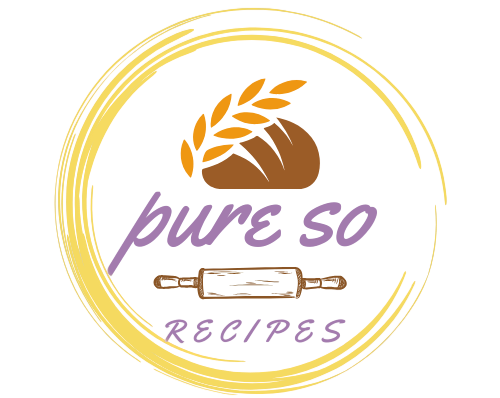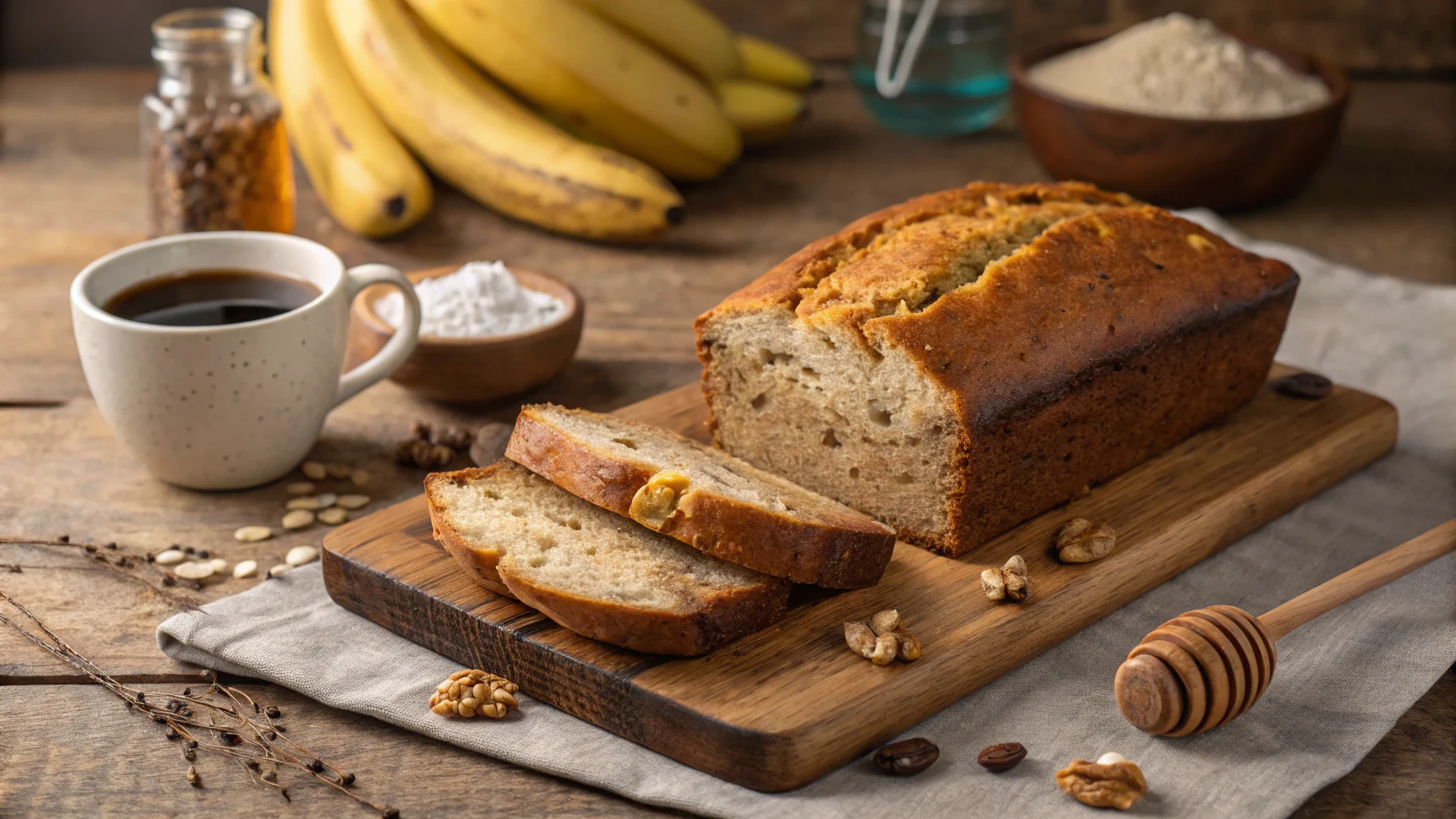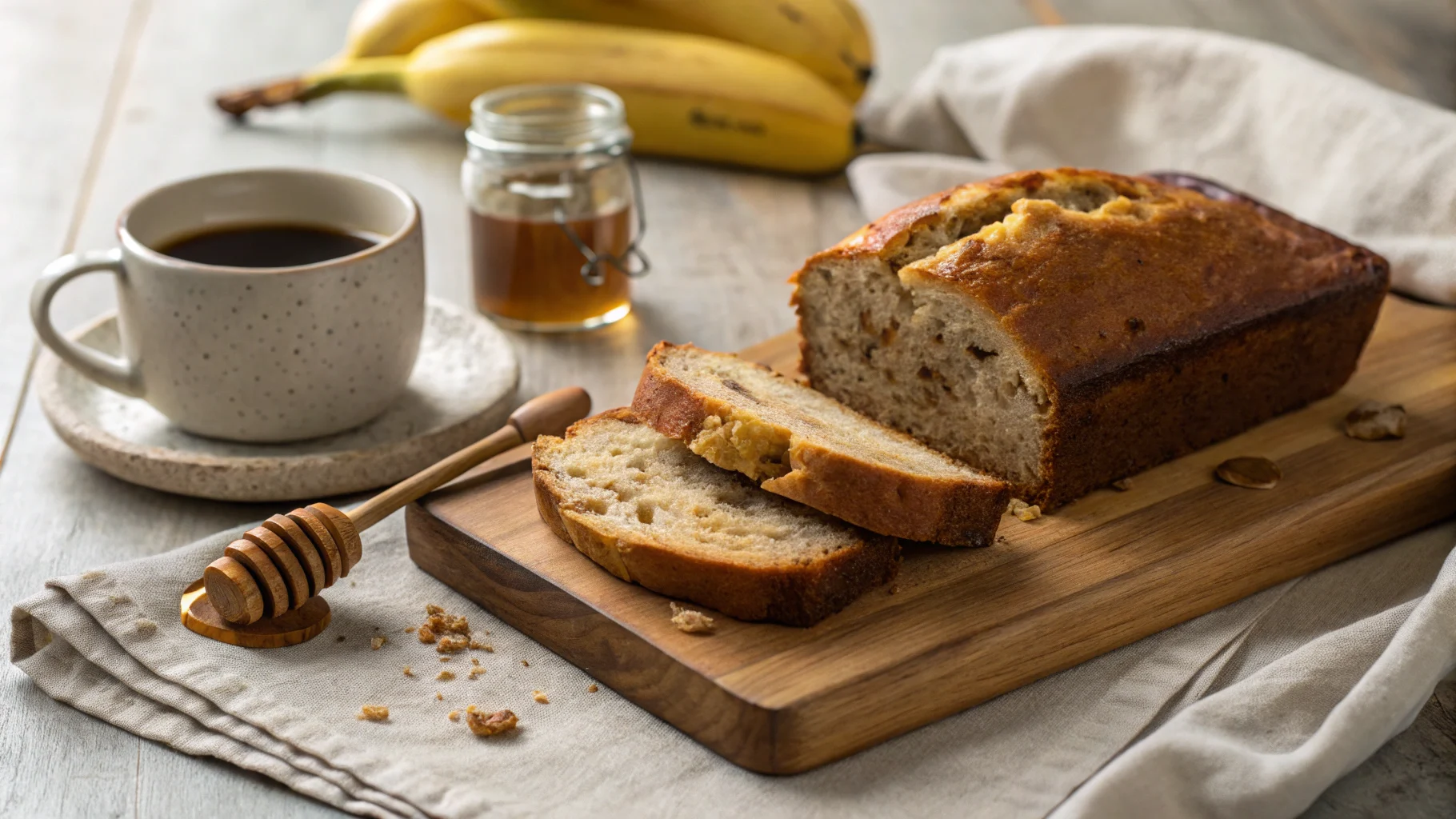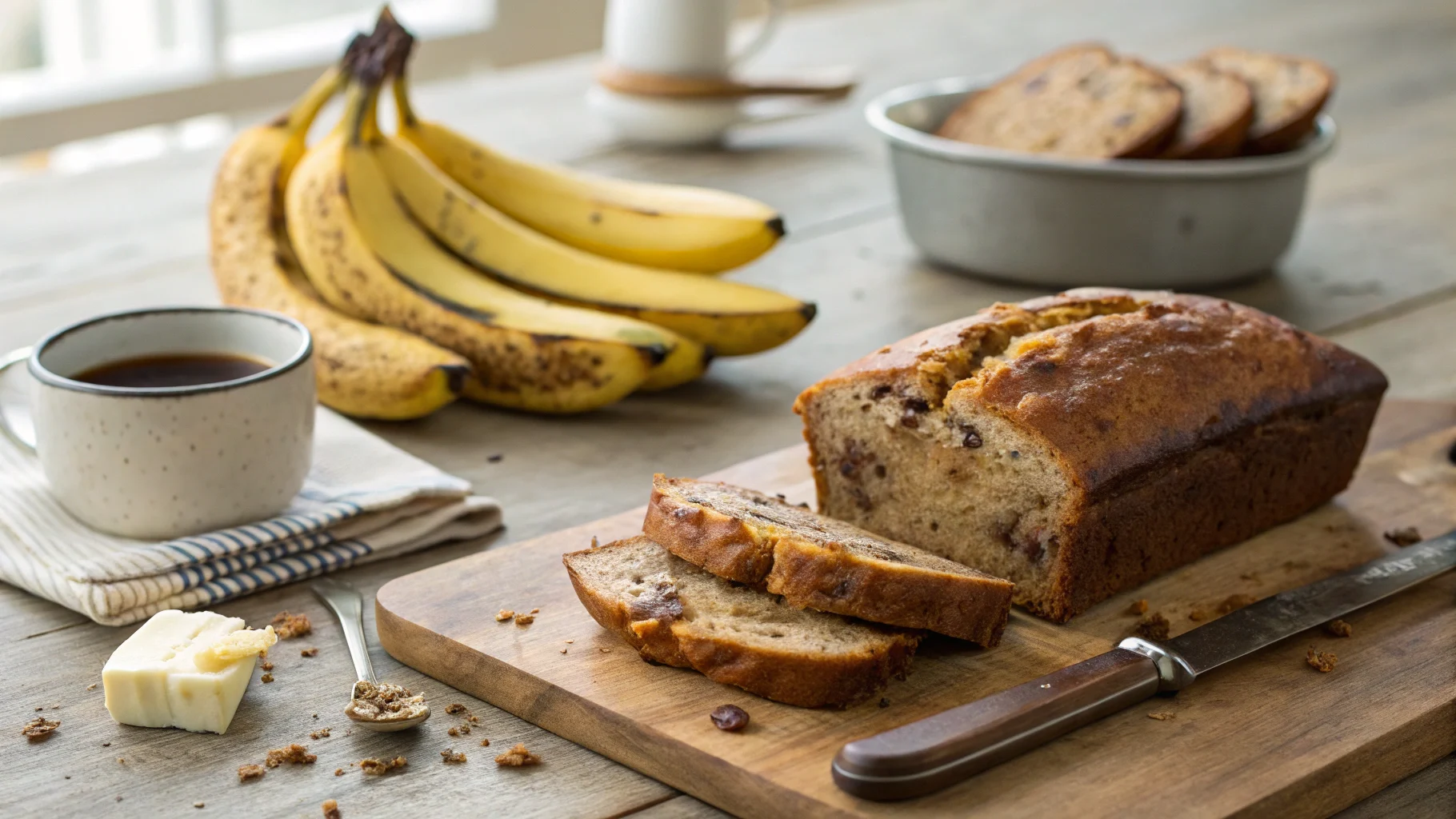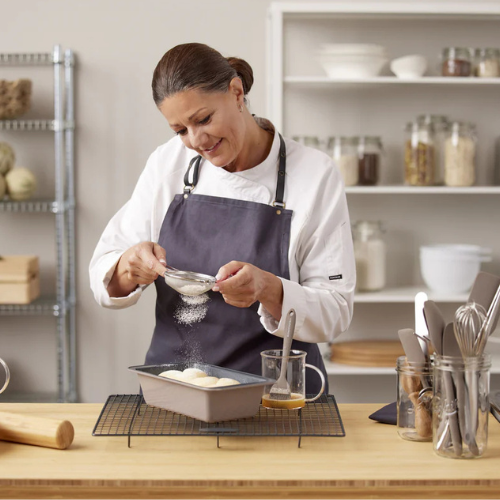Introduction Can Banana Replace Butter in Baking?
Cooking and baking often require butter for its rich flavor, creamy texture, and moisture-retaining properties. However, many people are searching for healthier alternatives due to dietary restrictions, personal preferences, or a desire to reduce fat intake. This has led to a growing interest in natural, plant-based substitutes that provide similar results.
One question that frequently arises is: Can banana replace butter? The idea of using mashed bananas instead of butter may seem unusual, but it is an effective swap in many recipes. Bananas add natural sweetness, moisture, and a soft texture to baked goods. However, they also come with unique properties that may alter the final outcome.
As more people embrace vegan, low-fat, and nutrient-dense cooking, banana has become a go-to ingredient for replacing butter in baking and desserts. In this guide, we’ll explore whether bananas can truly replace butter, how they compare nutritionally, and what adjustments you may need to make for the best results.
Nutritional Comparison: Can Banana Replace Butter for Healthier Baking?
When considering a butter substitute, nutrition plays a crucial role in determining whether an ingredient is a good fit. Since butter is high in fat and calories, replacing it with a plant-based alternative like banana significantly alters the nutritional profile of a recipe.
Macronutrient Ratios: How Do Bananas and Butter Compare?
The macronutrient composition of bananas and butter differs significantly. While butter is primarily composed of fat, bananas consist mostly of carbohydrates.
- Banana: 5% protein, 93% carbohydrates, 3% fat
- Butter: Less than 1% protein, 0% carbohydrates, 81% fat
- Almond butter (alternative comparison): 13% protein, 11% carbohydrates, 76% fat
These differences impact baked goods in multiple ways. Since butter provides structure, richness, and a smooth texture, removing it can change how a recipe turns out. When using banana instead, the final product may be softer, denser, and naturally sweeter. However, since banana lacks fat, recipes that depend on butter for a flaky or crispy texture may require additional adjustments.
Caloric Content: Does Using Banana Instead of Butter Reduce Calories?
One of the biggest reasons people seek butter substitutes is to reduce calorie intake. Butter is highly caloric, with 717 calories per 100 grams, while bananas contain only 89 calories per 100 grams. Almond butter, another popular substitute, falls between the two at 614 calories per 100 grams.
Replacing butter with bananas can significantly lower the calorie content of baked goods, making them a better choice for those focusing on weight management or low-calorie diets. However, lower calories also mean lower fat content, which affects the moisture retention and texture of the final dish. In some cases, adding a small amount of oil or nut butter alongside banana can help maintain the structure of baked goods without dramatically increasing the calorie count.
Fiber and Sugar Content: Can Banana Replace Butter Without Changing Texture?
Bananas contain more sugar but less fiber than butter alternatives like almond butter.
- Bananas: 12.2g sugar, 2.6g fiber per 100g
- Almond butter: 6.3g sugar, 10.3g fiber per 100g
- Butter: 0g sugar, 0g fiber
Since bananas are naturally sweet, they can reduce the need for added sugar in baked goods. This can be beneficial for those looking to limit refined sugar intake while still enjoying flavorful treats. However, because bananas contain less fiber than almond butter, they do not provide the same digestive benefits or slow energy release.
Additionally, the higher sugar content in bananas means they can caramelize faster in baking, potentially altering the browning and texture of certain recipes. If using bananas as a butter substitute in baked goods, adjusting the amount of added sugar is essential to avoid an overly sweet final product.
Vitamins and Minerals: Nutritional Benefits of Bananas vs. Butter
Bananas and butter offer different nutritional benefits. While butter is rich in fat-soluble vitamins, bananas provide essential water-soluble vitamins and minerals.
- Bananas are high in:
- Vitamin C (supports immune function)
- Vitamin B6 (important for brain health and metabolism)
- Potassium (essential for muscle function and blood pressure regulation)
- Butter is high in:
- Vitamin A (supports vision and skin health)
- Vitamin D (important for bone health)
- Vitamin E (acts as an antioxidant)
When compared to almond butter, bananas lack calcium, riboflavin, and niacin, but they still offer essential nutrients that can contribute to a balanced diet. Using bananas instead of butter can make baked goods more nutrient-dense while reducing saturated fat intake.
Fat Content and Types: The Biggest Difference
Fat content is the most notable difference between bananas and butter. Butter is composed of 81% fat, including saturated fats, while bananas contain only 0.3% fat per serving. Even almond butter, a healthier fat alternative, contains 76% fat, making it closer in composition to butter than bananas.
Why Does Fat Matter in Baking?
- Fat contributes to moisture retention and richness.
- It helps create a soft, flaky, or crispy texture.
- It slows down gluten formation, leading to a tender crumb.
Since bananas contain almost no fat, baked goods made with them instead of butter tend to be lighter, softer, and moister. However, in recipes that require flakiness (such as pie crusts or croissants), bananas alone may not be suitable. Adding a small amount of coconut oil or avocado alongside mashed banana can help achieve a more balanced texture.
Final Thoughts on Nutritional Differences
Can banana replace butter? From a nutritional perspective, bananas are a much lower-fat, lower-calorie, and higher-sugar alternative to butter. They work well in recipes that benefit from moisture, natural sweetness, and a soft texture. However, due to the lack of fat, they may not be suitable for recipes that require flaky, crispy, or buttery textures.
Understanding the nutritional differences between bananas and butter can help you make informed choices when substituting ingredients in your favorite recipes. While bananas provide a healthier alternative, they may require additional adjustments to maintain the best baking results.
Practical Application: Using Banana as a Butter Substitute
Bananas are a versatile ingredient in baking, offering a healthier alternative to butter while maintaining moisture and texture. But can banana replace butter in all recipes? The answer depends on the type of baked good and the desired outcome. Some recipes benefit from the natural sweetness, softness, and binding properties of bananas, while others require butter’s fat content for structure and flakiness.
Recipes Where Banana Works Well
Bananas work best in baked goods that are naturally soft, moist, and slightly dense. Since they have natural sugar and starch, they help create a smooth texture without the need for additional fats.
Here are some common recipes where bananas can replace butter:
- Oatmeal Pancakes – Bananas provide a fluffy, tender texture without the need for butter.
- Fudge Brownies – Their natural sweetness enhances the chocolatey richness while keeping brownies soft and gooey.
- Yellow Cupcakes – Bananas add moisture, helping cupcakes stay soft without drying out.
- Lemon Bundt Cake – The fruit’s binding properties help create a dense but moist cake.
- Banana Bread – This is the perfect recipe for using mashed bananas, as they naturally complement the flavor and texture.
Since bananas contain more water than butter, they work best in recipes that don’t rely on fat for structure. If a recipe requires a flaky or crispy texture, using bananas alone may not be ideal.
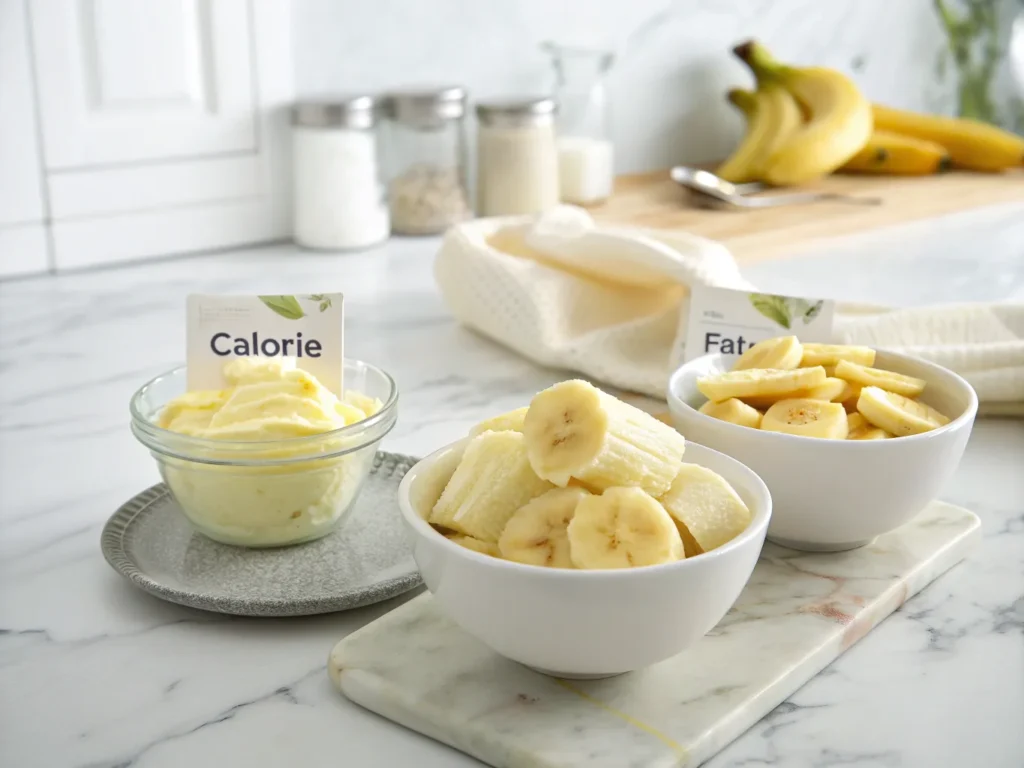
Techniques for Substituting Banana for Butter
Understanding the Substitution Ratio
The standard ratio for replacing butter with banana is 1:1. This means that for every 1 cup of butter, you can use 1 cup of mashed banana. However, because bananas contain more moisture and less fat, you may need to make small adjustments to the recipe.
How to Prepare Bananas for Baking
To effectively replace butter, bananas should be prepared correctly:
- Use ripe or overripe bananas for the best texture and sweetness.
- Mash them until smooth using a fork, blender, or food processor.
- If using in cake batter, consider whipping them with a hand mixer to create a smoother consistency.
If your bananas aren’t ripe enough, you can ripen them quickly:
- Oven method: Place whole bananas on a baking sheet and bake at 300°F for 30-40 minutes until the peel turns black.
- Microwave method: Pierce the peel with a fork and microwave for 30-60 seconds to soften.
Using well-mashed bananas ensures an even distribution in the batter, preventing lumps that could affect texture.
Impact on Texture and Moisture
Since bananas contain more water than butter, they create a lighter, fluffier, and slightly denser texture. Baked goods made with bananas tend to be moist but less chewy, which works well in cakes, muffins, and brownies. However, if a recipe relies on butter for flakiness, such as pastries or pie crusts, banana alone may not work as a substitute.
Adjustments Needed When Using Banana
When replacing butter with bananas, certain modifications may be necessary to maintain balance in flavor and texture.
- Reduce Added Sugar: Bananas naturally contain sugar, so you may need to cut back on sweeteners. For every 1 cup of mashed banana, consider reducing the sugar by ¼ to ½ cup.
- Adjust Liquids: Since bananas add extra moisture, reducing the amount of milk or other liquids can prevent a soggy texture.
- Increase Flour if Needed: If the batter seems too runny, adding a few tablespoons of extra flour can help achieve the right consistency.
Making small changes ensures the final baked product has a balanced taste and structure without being overly wet or sweet.
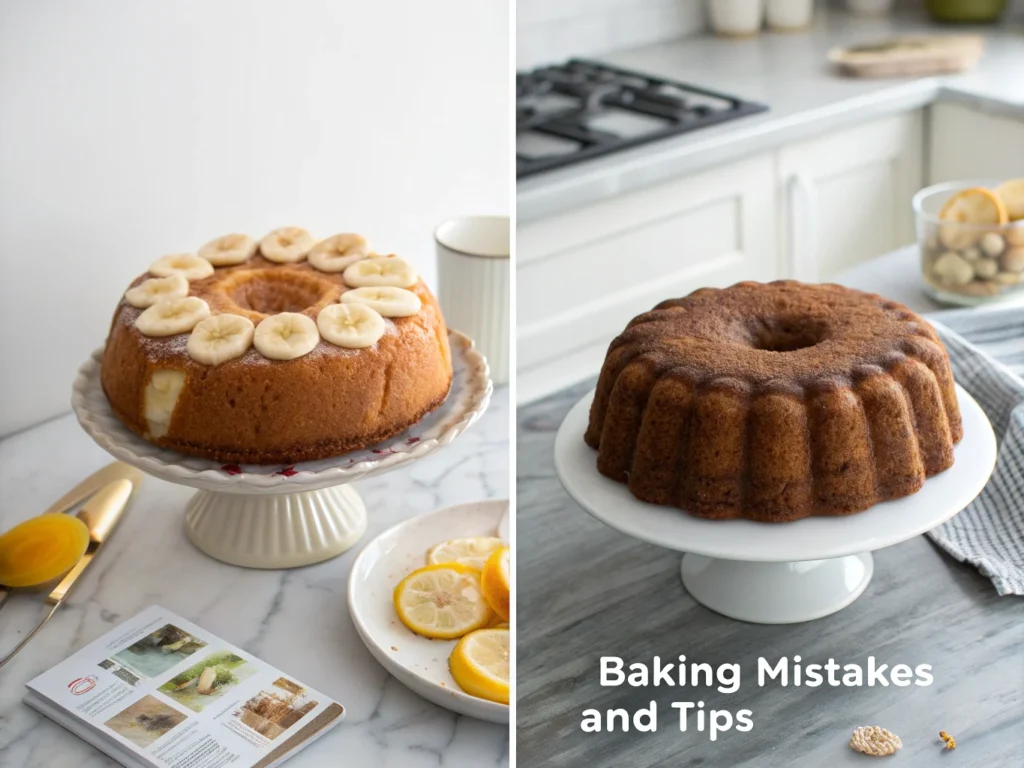
Potential Issues and How to Solve Them
While bananas work well as a butter substitute, they can sometimes cause unexpected changes in the final product. Here are some common issues and solutions:
1. Strong Banana Flavor
- Problem: The taste of banana may overpower delicate flavors like vanilla or lemon.
- Solution: Use a combination of mashed banana and mild oil (like coconut oil or canola oil) to balance the flavor. Reducing the amount of banana slightly can also help.
2. Changes in Texture
- Problem: Baked goods may turn out softer, fluffier, or less chewy than intended.
- Solution: Add a small amount of cornstarch or extra flour to help with texture. If a firmer texture is needed, mixing banana with Greek yogurt or nut butter can help.
3. Faster Browning
- Problem: Because bananas contain natural sugars, baked goods may brown too quickly in the oven.
- Solution: Reduce the oven temperature by 25°F and bake for a longer time to prevent over-browning.
4. Difficulty Binding Ingredients
- Problem: Some recipes, like cookies or pie crusts, require butter to bind the ingredients.
- Solution: Use ½ banana + ½ oil or nut butter to maintain the correct consistency while keeping the dish plant-based.
Understanding these adjustments ensures a smoother transition when swapping butter for banana in different recipes.
Real-World Examples and Case Studies
To better understand how replacing butter with bananas works in practice, let’s explore some real-world examples.
Example 1: Banana Brownies vs. Traditional Brownies
A side-by-side comparison of brownies made with butter vs. those made with banana shows noticeable differences:
- Butter-based brownies: Rich, dense, and chewy with a fudgy texture.
- Banana-based brownies: Slightly lighter, softer, and naturally sweeter.
Although the banana brownies lacked the deep buttery richness, they still had a moist and satisfying texture, making them a great alternative for health-conscious bakers.
Example 2: Banana Muffins vs. Butter-Based Muffins
When tested in a muffin recipe, bananas proved to be an excellent substitute. The muffins:
- Retained moisture without becoming greasy.
- Developed a naturally sweet flavor, reducing the need for added sugar.
- Maintained a fluffy texture despite the lack of butter.
These examples highlight that banana can replace butter successfully in many baked goods, though the results vary depending on the recipe.
Final Thoughts on Using Bananas Instead of Butter
Can banana replace butter? The answer depends on the recipe and desired outcome. In soft, moist baked goods like cakes, muffins, and brownies, bananas provide an excellent butter substitute that adds natural sweetness and nutrients while reducing fat and calories. However, in recipes that require flakiness or buttery richness, bananas alone may not be the best choice.
By understanding the right techniques and making small adjustments, you can use bananas to create healthier, plant-based versions of your favorite recipes. Whether you’re looking to cut down on saturated fat, experiment with vegan baking, or simply use up ripe bananas, this substitution is worth trying.
Conclusion
Using bananas as a butter substitute offers both benefits and challenges. On the positive side, bananas provide a healthier, lower-calorie alternative to butter while adding natural sweetness and moisture to baked goods. They work especially well in cakes, muffins, and brownies, making them a great choice for those looking to reduce fat intake or follow a plant-based diet.
However, bananas also have limitations. Unlike butter, they contain no fat, which means they cannot replicate the flakiness and richness that butter provides in certain recipes. Additionally, their distinct flavor can alter the taste of some baked goods. Adjusting sugar levels and combining bananas with small amounts of oil or nut butter can help achieve better results.
Can banana replace butter? In many cases, yes. However, it’s important to understand the nutritional and textural differences before making the switch. By experimenting with small adjustments, you can find the perfect balance to suit your recipes and dietary preferences.
FAQs
How many bananas equal 1 cup of butter?
Approximately 1 cup of mashed banana can replace 1 cup of butter in baking. However, because bananas contain more moisture and less fat, slight adjustments may be necessary to maintain the desired texture.
What do I use when I don’t have butter?
If you’re out of butter, you can use alternatives like mashed banana, applesauce, Greek yogurt, or coconut oil. Each substitute provides a different texture and flavor, so choosing the right one depends on the recipe.
What is a substitute for 1 cup of butter?
Common substitutes for butter include:
- 1 cup of mashed banana (best for soft baked goods)
- 1 cup of applesauce (adds moisture without altering the flavor too much)
- ¾ cup of Greek yogurt (provides a slight tang and protein boost)
- ½ cup of oil (helps retain fat content for flaky recipes)
Can I replace oil with banana?
Yes, bananas can replace oil, but they will change the flavor and texture. Because bananas contain natural sugar and water, they can make baked goods denser and softer. If using bananas instead of oil, reduce added sugar and slightly adjust liquids to maintain consistency.
